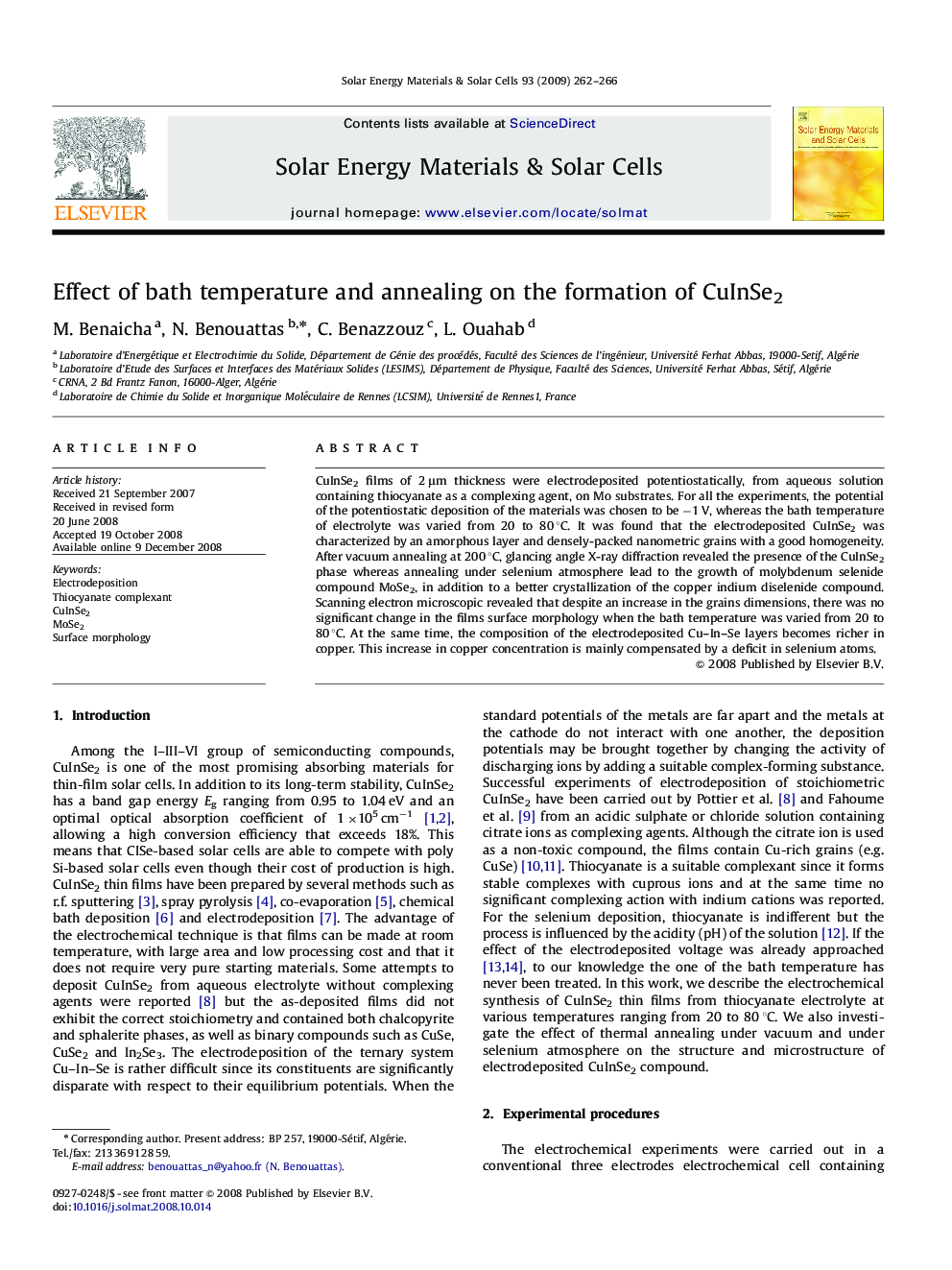| Article ID | Journal | Published Year | Pages | File Type |
|---|---|---|---|---|
| 80173 | Solar Energy Materials and Solar Cells | 2009 | 5 Pages |
CuInSe2 films of 2 μm thickness were electrodeposited potentiostatically, from aqueous solution containing thiocyanate as a complexing agent, on Mo substrates. For all the experiments, the potential of the potentiostatic deposition of the materials was chosen to be −1 V, whereas the bath temperature of electrolyte was varied from 20 to 80 °C. It was found that the electrodeposited CuInSe2 was characterized by an amorphous layer and densely-packed nanometric grains with a good homogeneity. After vacuum annealing at 200 °C, glancing angle X-ray diffraction revealed the presence of the CuInSe2 phase whereas annealing under selenium atmosphere lead to the growth of molybdenum selenide compound MoSe2, in addition to a better crystallization of the copper indium diselenide compound. Scanning electron microscopic revealed that despite an increase in the grains dimensions, there was no significant change in the films surface morphology when the bath temperature was varied from 20 to 80 °C. At the same time, the composition of the electrodeposited Cu–In–Se layers becomes richer in copper. This increase in copper concentration is mainly compensated by a deficit in selenium atoms.
